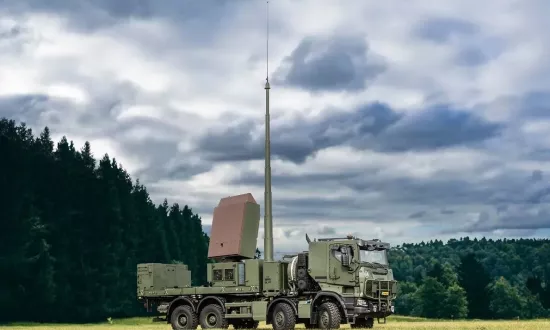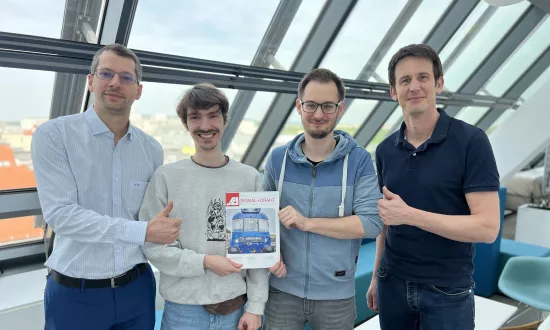The Thales sensing module revolutionising thermal imaging performance for armoured fighting vehicles
Thales’s TIM-LR long-range, dual-field-of-view (DFOV) thermal imaging module gives armoured vehicle commanders and crews the range, flexibility, and fast, accurate firing capability they need to complete their missions safely in urban and non-urban environments, day and night. Its powerful uncooled detector, housed in a rugged, lightweight package, delivers major performance enhancements for area surveillance, target detection/identification and remote weapon station (RWS) firing applications.
The protected patrol vehicle (PPV) rounds a corner, and drives up the centre of the dark, silent street, with houses tightly packed on either side. The night is clear, moonless and windless. Vehicle commander Patrick has briefed his team carefully: their mission is to maintain a visible peacekeeping presence in the urban sector, while monitoring movements of suspected insurgents. Local rules of engagement allow them to return fire using their vehicle’s remote weapon station (RWS) if they come under attack from hostile elements.
Patrick carefully scans a crossroads a few hundred metres away using the externally mounted TIM-LR thermal imaging module integrated into the vehicle’s RWS system. Something doesn’t look right. Suspecting that the makeshift barrier at the crossroads is a decoy (he can see that it’s unmanned), he orders the driver to slow down, and looks further ahead into the darkness, using the thermal imager to check out a large municipal building on the other side of the river, at a range of about two-and-a-half kilometres.
Video from the TIM-LR module is also displayed on the RWS operator’s and driver’s screens. A 4x electronic zoom, combined with the latest advanced image processing algorithms, enables the vehicle crew to benefit fully from the detector’s power. Once an item of interest is on their screen, they can keep it clearly in view, without needing to search for it again if they zoom in or out.
Revolutionary performance
What makes the TIM-LR revolutionary is its high-resolution uncooled detector, which gives unsurpassed range performance in a very wide (20°) field of view, offering four times the situational awareness of a conventional imager, and making it ideal for asymmetric warfare in intricate combat environments. Targets can be identified and engaged at a range of just under 3 kilometres, while the TIM-LR’s detection range extents to over 11 km.
Gaining a tactical edge: FOV is key
The TIM-LR’s field-of-view and range performance combine to give vehicle crews a crucial tactical edge in urban warfare scenarios. Operating experience from asymmetric engagements in urban environments in recent years showed that crews needed a better view of what was going on around them in order to be able to complete their missions safely and effectively. The TIM-LR’s DFOV capability gives them what they need: the wide FOV allows greater situational awareness, while the narrow FOV is ideal for long-range surveillance and targeting.
“Scoot or shoot”
Thanks to the PPV’s TIM-LR module, Patrick is able to see, even at this distance, the insurgents gathered round a truck-mounted machine gun positioned in a dark alley at the side of the municipal building. This is where what Patrick likes to call his vehicle’s “scoot or shoot” capability comes in: having used the thermal imager for reconnaissance purposes from a safe distance, he is now in a position to choose to either avoid an engagement or to engage the insurgents using the vehicle’s RWS if needed.
With its powerful, high-resolution e-zoom and narrow field of view, the TIM-LR allows for very accurate firing, enabling targets to be hit with the first shot, while the crew remains safe inside the vehicle.
Precision engagement
With the vehicle moving slowly forward, but still short of the makeshift barrier, Patrick spots two insurgents using night vision goggles on the roof of the municipal building, and orders the RWS operator to be ready to engage. The truck-mounted gun opens fire, but before it can do any damage to the PPV, it is neutralised by a high-precision strike from the vehicle’s RWS.
Patrick and his crew are able to return to base safe and sound. They have fulfilled their mission brief, thanks in no small part to the reliable high-resolution performance of the Thales TIM-LR sensing module, which gave them the capabilities they needed, when they needed them, in a rapidly evolving combat scenario.


